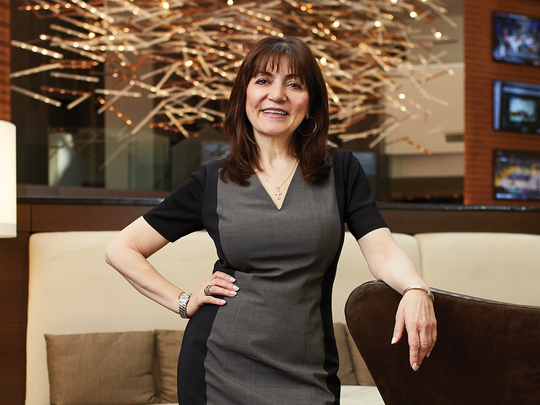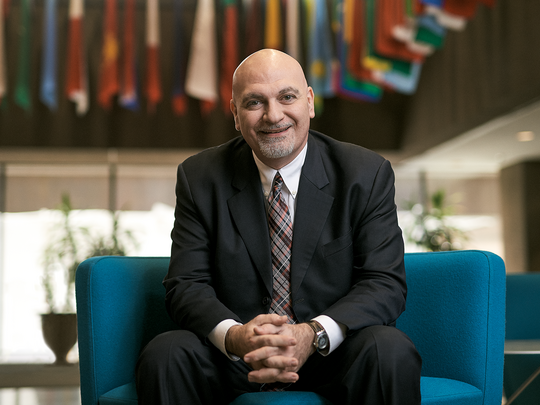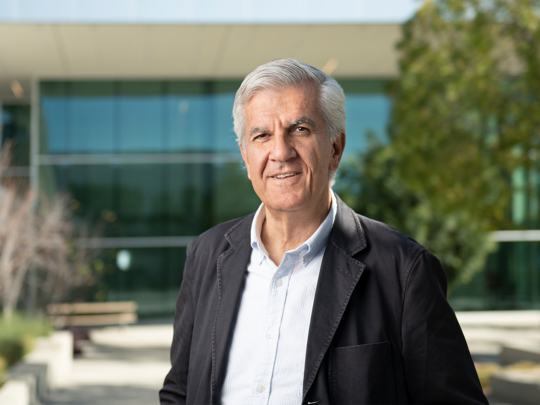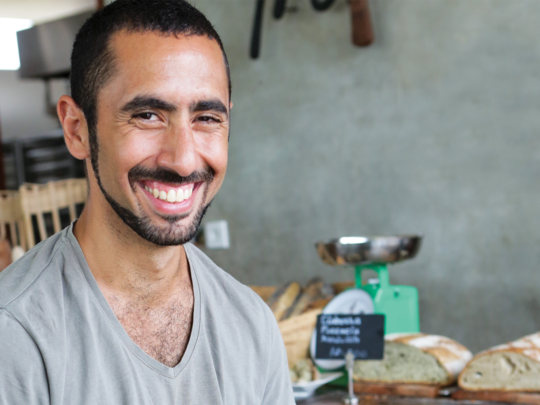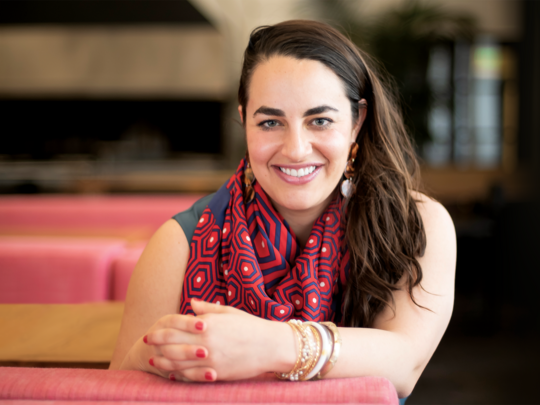For nearly four decades, Dr. Vania Apkarian has been on a quest to help millions of people globally who suffer from chronic pain understanding its causes. As Neuroscientist at the Department of Physiology, Anesthesia, Physical Medicine and Rehabilitation, as well as Director of the recently founded Center for Translational Pain Research, and Program Director of the Center for Chronic Pain and Drug Abuse at Northwestern University Feinberg School of Medicine, he works to alleviate clinical pain conditions and achieve a more profound theoretical and mechanistic understanding of the brain in relation to perception.
Q What is your specific area of focus?
A I study brain processes and mechanisms and the neuro system; how the neuro system in general operates and the principles of information transmission and information storage in the brain. The big question we are trying to answer is: how does all this information storage result in perception and consciousness? This question was formulated by philosophers like Plato and Aristotle 2500 years ago and still remains unanswered. My work has been focused on pain perception and how pain perception comes about in the brain. What is the circuitry behind it; the circuit properties; and how does the information get processed in the brain in general?
Q Why is understanding pain perception so important?
A Obviously pain perception has a large impact on mankind. Recent epidemiologic studies are very scary. They show the incidents of chronic pain worldwide to be about 20%. This is massive and it debilitates peoples’ everyday lives, ability to earn a living, and contribute to society. The number of people suffering from chronic pain is more than all other major health conditions put together. The cost of healthcare just in the U.S. has been estimated, by a National Academy of Science study, to be half a trillion dollars a year just for the care and treatment of chronic pain.
Q In lay terms, how do you go about understanding pain in the brain?
A When you have two people who have a similar injury, for example a minor car crash, one of them will develop chronic pain and the other will not. Why? At least by this simple example you can say that the injury itself is not sufficient for people developing chronic pain, so what is it? If it’s not the injury, then it’s the brain. Pain is in the brain. It’s a perception. So, modern techniques like human brain imaging are central to our research. We have built models based on human brain anatomy, physiology, and information exchange across different areas. From these we derive numbers, put them in a formula and calculate if people are at risk for developing chronic pain. We now use such formulas in clinical trials, so we think these have absolute utility in who gets treated what way, when they should be treated, how much they should be treated, etc. The practice of medicine becomes more rationalized if you have models and scientific theories. We are trying to make these tools simpler so that clinicians can take advantage of them. Right now, they’re complicated. The brain imaging data is very complicated, has lots of dimensions to it, and the analysis is very complex. The idea is that with ten questions, in five minutes, you would know who would suffer from chronic pain. That’s where we need to go. We’re not quite there yet, but we’re on that road.
Q What motivates you in this quest?
A The excitement is the scientific discovery itself and also about working in a field where there’s, in fact, the potential of making a big difference: the level of pain suffering on the planet. That’s what we’ve been chasing for decades now. Can we make a difference? The beauty of science is that in a very small lab, in a remote area on the planet, you can come up with a discovery and it may sweep the whole planet and change the amount of suffering in the world.
Q Do you think you will find a cure for chronic pain?
A I’m very optimistic. After all I am Armenian and a scientist. I think we are right on the threshold of making big differences. We are currently studying multiple non-opioid drugs with the potential of preventing or curing chronic pain. And, yes, my group is a worldwide leader in both theory and application of science to pain, which is what’s really exciting as well.
Q What influence has your Armenian background had on you and your work?
A First of all, I’m massively Armenian. Both of my parents are Armenian. I write in Armenian and I still read a lot of Armenian literature, from Shiragatsi to Sevag. I love Armenian culture. It keeps me enriched. Although my wife is not Armenian, my daughter just came back from three and a half years of spending time in Yerevan where she learned the language. I’ve been lucky to be educated in AGBU schools, which provided my knowledge foundation and early romance with science. The Velvet Revolution in Armenia has created the opportunity for a scientific reawakening, and I fully intend to engage in the process.
What my Armenianness has to do with my science, I don’t know. I am an Armenian and I do science. Science and Armenians seem to naturally go hand-in-hand.
Banner photo by Jorge Gera


